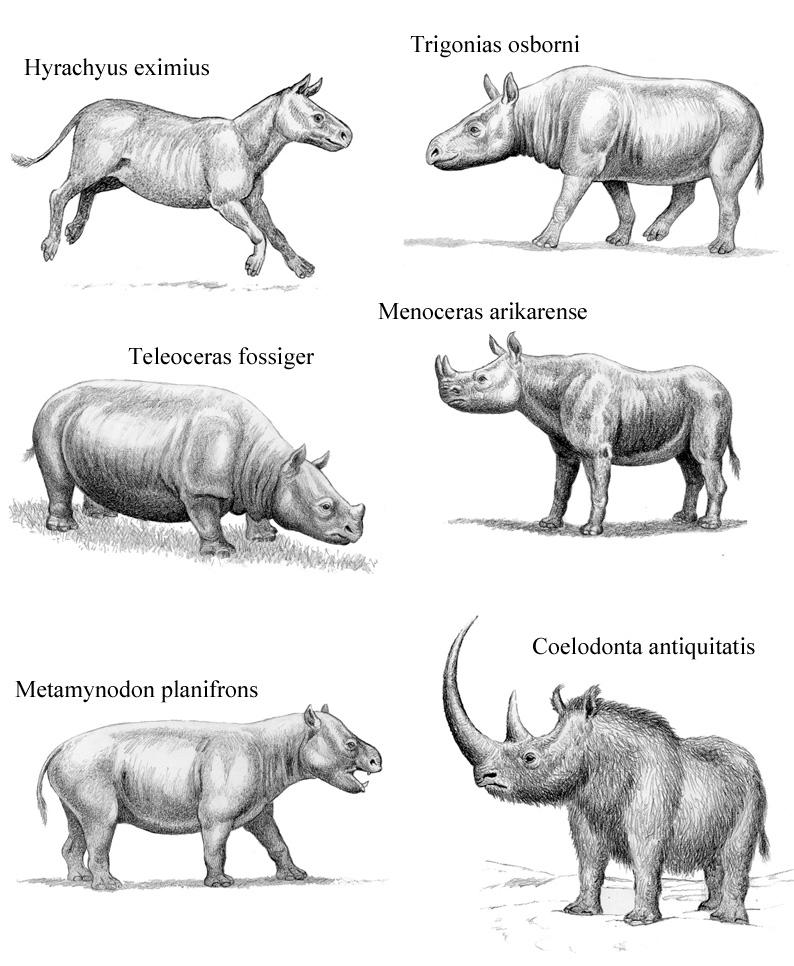

Rhino horns are primarily used for traditional medicines and as high-value gifts in Asia, mostly in China and Vietnam. They can complete this process in as little as 10 minutes. Poaching gangs search for rhinos from helicopters, shoot at them with guns or tranquiliser darts, and then remove their horns with chainsaws. Rhino poaching has risen recently-around 7,100 African rhinos have been killed in the last 10 years. Poaching, illegal trade, and habitat loss all affect rhinos, and their slow reproduction rates make recovery slow and difficult. For example, the IUCN lists just 18 mature individuals left in the Javan species. The threats facing some rhino species are very severe and require urgent attention. These rhinos have benefitted from successful conservation efforts, which have raised their numbers from around 200 at the beginning of the 20th century to approximately 3,700 today. The greater one-horned rhinoceros live in India and Nepal. The few remaining Javan rhinos also live in Indonesia, in a national park on the island of Java. Sumatran rhinos live in Indonesia-the last of 10 countries they historically inhabited. Reintroductions and assisted colonisation projects are currently happening in Botswana, Eswatini, Namibia, Uganda, Zimbabwe, Mozambique, Kenya, and Zambia. In the past, their range covered the bottom two thirds of Africa, but they have since become extinct in many places. Where do rhinos live?īlack rhinos live in Angola, Kenya, Mozambique, Namibia, South Africa, Tanzania, and Zimbabwe. However, habit loss and fragmentation are also threats. The primary threat faced by all five species of rhinoceros is poaching and illegal trade of their horns. Rhinoceros unicornis: Greater one-horned rhinoceros Are rhinos endangered?Īccording to the IUCN, Javan, Sumatran, and black rhinos are critically endangered, greater one-horned rhinos are vulnerable, and white rhinos are near threatened.Dicerorhinus sumatrensis: Sumatran rhinoceros.The two African species of rhinoceros are: The scientific name of the family all five species belong to is Rhinocerotidae. They are essential to their habitats as they help regulate and maintain plant life and grasslands on which many other species depend.

While adult rhinos have no natural predators, big cats, crocodiles, and wild dogs often target their calves. They give birth to just one calf at a time every two to four years, and their gestation period can last up to 16 months. As large mammals, all rhinos have slow reproduction rates. Of the African rhinos, black rhinos are solitary and white rhinos are more social, often living in herds. Though it lived at the same time as the woolly mammoth, it’s less well known, and far fewer of its fossils and remains have been found. Rhinos had an ancient ancestor that lived in Siberia during the Ice Age, the woolly rhino.
Are rhinos extinct skin#
By doing so, they protect their skin from sun and insects and keep themselves cool. When the sun is at its hottest, they display a behaviour called wallowing-lounging and rolling around in large pits of wet mud. Rhinos mainly feed during the night and cooler hours of the day. For example, white rhinos have evolved square lips to graze on abundant grass, while black rhinos have developed pointed lips to pick leaves and plants. Their exact diet depends on their habitat. They make up five of only nine remaining megaherbivore species left on Earth.

They range in size from 600-kilogram Sumatran rhinos to 3,500-kilogram white rhinos.ĭespite their large size, rhinos are herbivores-they only eat plant matter. Like fingernails, rhinoceros horns can be trimmed without discomfort or pain.ĭespite two rhino species mentioning colours (black rhino and white rhino), all rhinos are grey. Rhinoceros horn is made of keratin, the same material as human fingernails, and they grow continuously throughout a rhino’s life. Some species have one horn, while others have two. There are currently five different species of rhino-two in Africa and three in Asia. Rhinos are one of the Big Five animals popular in African safaris, but they also live in Asia and even lived in Europe in the past.


 0 kommentar(er)
0 kommentar(er)
